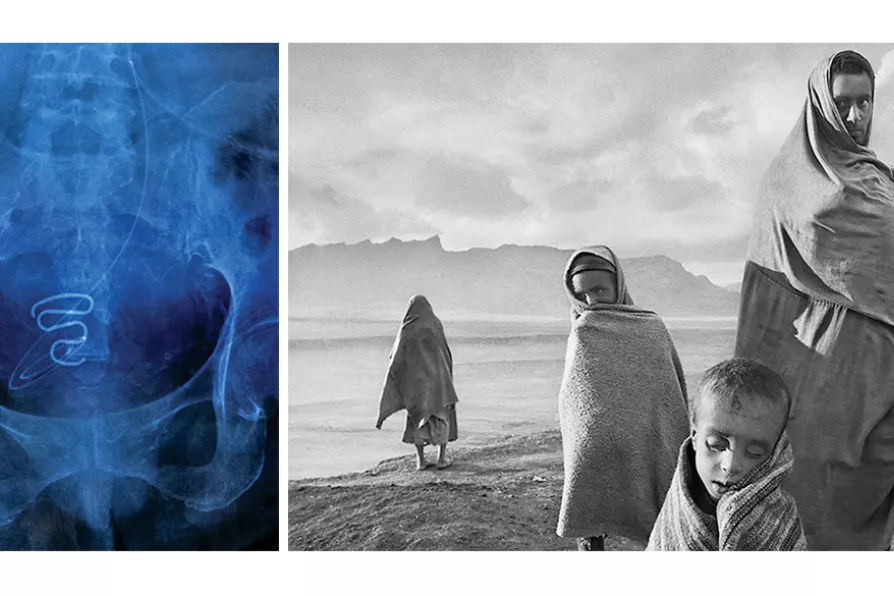The Bard reflects on sharing a bed, and why he wont go to Chelsea

 (L to R) Juliette Pavy: Spiralkampagnen, 2024. An X-ray showing an IUD – more commonly known as a ‘spiral’ – used during the Greenlandic forced contraception campaign (Spiralkampagnen) from 1966 to 1975; Sebastiao Salgado: Ethiopia, 1984. Draped in blankets to keep out the cold morning wind, refugees wait outside Korem camp. Ethiopia.
[(L to R) © Juliette Pavy / © Sebastiao Salgado]
(L to R) Juliette Pavy: Spiralkampagnen, 2024. An X-ray showing an IUD – more commonly known as a ‘spiral’ – used during the Greenlandic forced contraception campaign (Spiralkampagnen) from 1966 to 1975; Sebastiao Salgado: Ethiopia, 1984. Draped in blankets to keep out the cold morning wind, refugees wait outside Korem camp. Ethiopia.
[(L to R) © Juliette Pavy / © Sebastiao Salgado] Sony World Photography Awards Exhibition
Somerset House
THIS is an eclectic showcase of talent, with a few hefty themes emerging, including mankind’s hand in the immolation of our beautiful planet.
Another thread, with some gut-punching images, is the ubiquitous violence against women and girls, and the soaring power of sisterhood, as female photojournalists focus on telling their sisters’ stories.
The star of the show, in many ways, is the amazing Brazilian photographer Sebastiao Salgado, recipient of this year’s Outstanding Contribution to Photography.

LYNNE WALSH reports from the Women’s Declaration International conference on feminist struggles from Britain to the Far East

Caroline Darian, daughter of Gisele Pelicot, took part in a conversation with Afua Hirsch at London’s Royal Geographical Society. LYNNE WALSH reports

This year’s Bristol Radical History Festival focused on the persistent threats of racism, xenophobia and, of course, our radical collective resistance to it across Ireland and Britain, reports LYNNE WALSH

LYNNE WALSH previews the Bristol Radical History Conference this weekend














